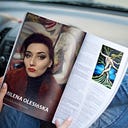Contemporary Art Walter De Maria

Walter Joseph De Maria (October 1, 1935 — July 25, 2013) was an American artist, sculptor, illustrator and composer, who lived and worked in New York City. Walter de Maria’s artistic practice is connected with Minimal art, Conceptual art, and Land art of the 1960s.LACMA director Michael Govan said that “I think he’s one of the greatest artists of our time.” Govan, who worked with De Maria for a number of years, found De Maria’s work “singular, sublime and direct.De Maria was born in 1935 in Albany, California. His parents were the proprietors of a local restaurant in Albany. Walter De Maria’s first academic interest was music — first piano, then percussion. He also took to sports and cars, of which he made drawings. By 1946 he had joined a musicians’ union. From 1968 De Maria produced Minimalist sculptures and installations such as the Munich Erdraum of 1968. He realized Land art projects in the deserts of the south-west US, with the aim of creating situations where the landscape and nature, light and weather would become an intense, physical and psychic experience. In his work, De Maria stressed that the work of art is intended to make the viewer think about the earth and its relationship to the universe.
The Lightning Field (1977) is De Maria’s best-known work. It consists of 400 stainless steel posts arranged in a calculated grid over an area of 1 mile × 1 km. The time of day and weather change the optical effects. It also lights up during thunder storms. The field is commissioned and maintained by Dia Art Foundation. It has been speculated that The Lightning Field influenced the imagery of author Cormac McCarthy’s epilogue in his 1985 novel, Blood Meridian.
In the 1960s and 1970s, De Maria created enduring urban works. As complementary pieces, Vertical Earth Kilometer (1977), and The Broken Kilometer (1979), address the idea of unseen or abstracted distance. Vertical Earth Kilometer is a one-kilometer-long brass rod, two inches in diameter, drilled into Friedrichsplatz Park in central Kassel, Germany. The rod’s circular top, flush to the earth’s surface, is framed by a two-meter square plate of red sandstone.In 1979, De Maria meticulously arranged five hundred brass rods for The Broken Kilometer, a permanent installation at 393 West Broadway in New York…………More



